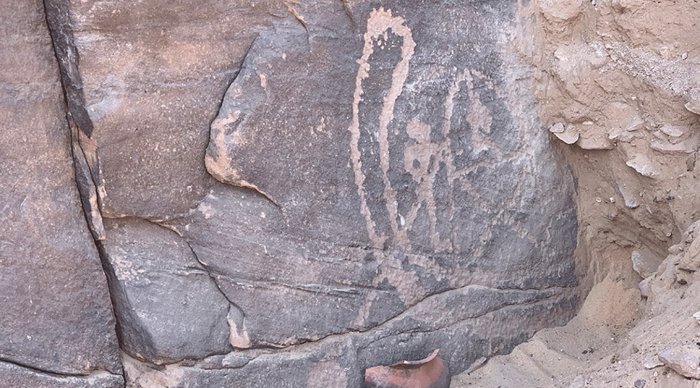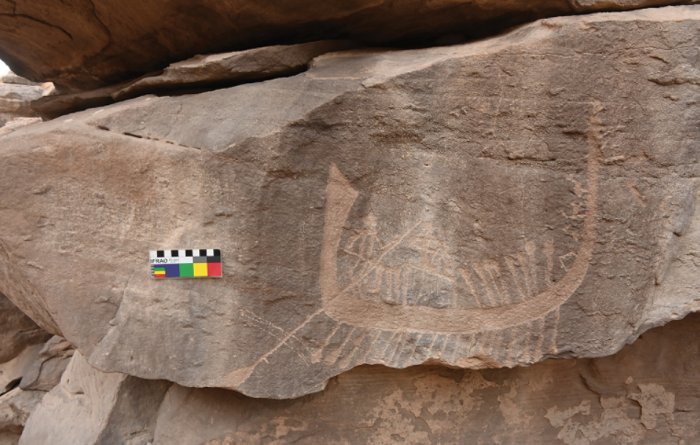Jan Bartek – AncientPages.com – Recently discovered rock art panel located near Aswan, Egypt, may illustrate a rare image of an elite individual from the First Dynasty. This finding provides valuable insights into the formation of the ancient Egyptian state, offering a glimpse into the region’s early social structures and its leadership, just before the first dynasty.
Panel SM36 during the cleaning process. This panel was discovered by chance; it was almost completely covered by rubble, which explains its good preservation. Source
The late 4th millennium BC was a key period in Egyptian history, marking the beginning of political unification across Egypt and ultimately leading to the formation of the Egyptian state by the first pharaoh, Narmer, around 3100 BC. However, little is known about how this significant process in prehistory spread.
The research’s author, Dr. Dorian Vanhulle from the Musée du Malgré-Tout, stated that encountering a petroglyph panel that potentially depicts an early example of an Egyptian political elite is indeed a remarkable and intriguing discovery.
However, the complex processes leading to state formation in ancient Egypt remain challenging to analyze because there are only a few examples in the Lower Nile Valley available for thorough examination.
The engraving is remarkably well-preserved and depicts an elaborate boat being pulled by five figures. One figure stands, using an oar to propel the boat, while another sits on a structure believed to be a palanquin.
A Protodynastic boat engraved at Wadi Abu Subeira. Source
According to Dr. Vanhulle, boats are prevalent motifs in Egyptian iconography. During the Predynastic and Protodynastic periods (approximately 4500–3085 BC), which preceded the pharaonic era in Egypt, boats were commonly depicted and held intricate ideological and symbolic significance.
The researcher dated the panel by comparing the petroglyph to boats in pre-pharaonic art. He suggests that the rock art was made during the transition from the Protodynastic to Early Dynastic periods, the time when the Egyptian state was first formed, centuries before the construction of the first pyramids.
The panel in question exhibits striking stylistic and iconographic similarities with the official imagery crafted towards the end of the Protodynastic period, extending into Narmer’s reign.
A decorated censer from Qustul (height: 85–90mm, diameter: 150mm; image courtesy of the Institute for the Study of Ancient Cultures of the University of Chicago; E24069).
It is noteworthy that the elongated chin of the seated figure bears a striking resemblance to the false beards traditionally worn by Egyptian monarchs since the First Dynasty. This detail indicates that this figure was indeed a member of the ruling class at the very beginning of Egypt’s First Dynasty.
Additionally, the high quality of the image suggests it was commissioned by an early political authority in Egypt, signaling that rock art was a key method by which early Egyptian elites expressed their power.
Compositions of this rock and similar ones served as instruments for authorities to communicate, delineate territories, and assert their dominance.
Dr. Vanhulle’s findings are published in Antiquity.
Written by Jan Bartek – AncientPages.com Staff Writer




